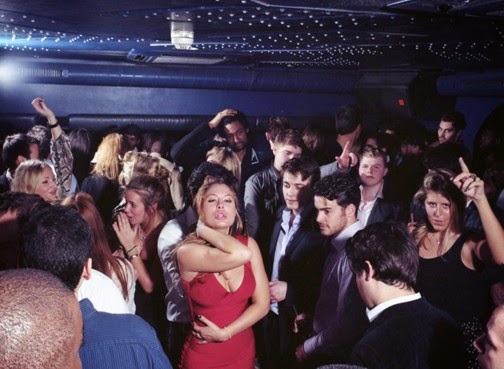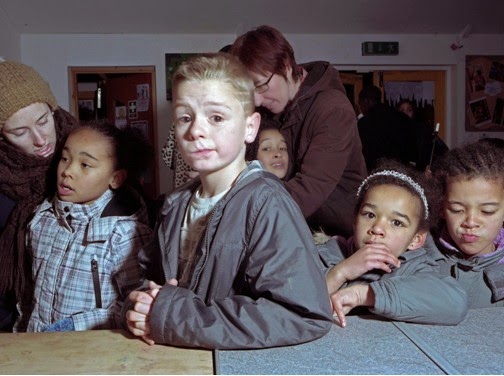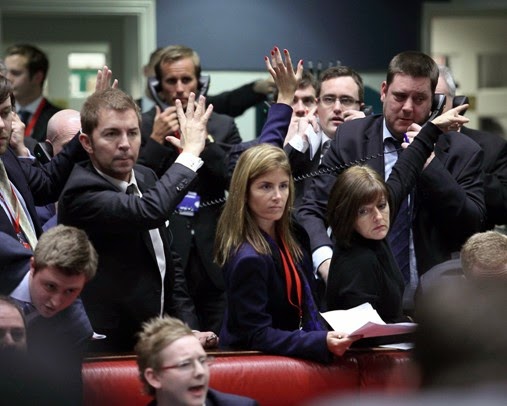
Mark Neville: London/ Pittsburgh @ Alan Cristea Gallery
The intersection of art and documentary is one of the main features of the work of British artist Mark Neville. His first solo show at Alan Cristea Gallery in London encompasses a series of thirteen group portraits unfolding the unique characteristics of the London and Pittsburgh communities. Merging the works of two different projects, Here is London (2012) and Braddock/Sewickley (2012) (commissioned by The New York Times and the Andy Warhol Museum respectively), Neville interrogates the social and cultural inequalities within two disparate geographical locations.
Investigating imbalances that emerge through diverse community backgrounds, the artist juxtaposes the socio-economic and class system of a metropolitan city such as London against the racial segregation and wealth distribution in two suburbs of a very prosperous American city, that of Pittsburgh. The works on view highlight social structures, behaviourism and cultural dissimilarities and prompts the viewer to draw their own conclusions about the societal tactics and mannerisms of certain groups in two different parts of the world.
Mark Neville talked to REVma -/+ about his exhibition and work:
REVma -/+: How do you choose your narratives?
M.N.: I rarely use the word narrative. I think about my work more in terms of a subversion of the conventions of social documentary practice. That means looking at issues and subjects like exploitation, dissemination, audience, hierarchy, visual representation and ethics. Narratives are incidental to these main concepts and questions.
REVma -/+: What attracts you to social diversities as well as sociocultural oppositions and imbalances?
M.N.: I have to feel a strong personal connection to a community or a particular social injustice. For example, my Grandfather suffered PTSD after returning from captain of a ship during World War II, and this led me, somewhat circuitously, to becoming a war artist. Sometimes the communities I find inspire the projects, but sometimes it is more an issue regarding social documentary practice which I want to investigate, and I subsequently find a suitable community which might provide the opportunity to explore the idea or question. I’m drawn to closely knit working communities often with a demographic numbering of 8,000. For some bizarre reason that seems small enough for people to start recognising you and word to get around about what you are doing, but also large enough to include a diversity of people with its own strong identity. There were around 8,000 personnel in 16 Air Assault Brigade, around 8,000 homes in Port Glasgow, and around 8,000 residents on the Isle of Bute…to pick three of the communities I worked with over the past ten years.

REVma -/+: Have you considered investigating parallel social phenomena in other continents such as Africa and Asia?
M.N: Yes, I have. And I just returned on Christmas day from shooting in Seoul, South Korea. Having said that, London/Pittsburgh came about as a form of artistic experiment regarding two existing bodies of work. Neither Here Is London, commissioned by the New York Times, nor Braddock/Sewickley commissioned by the Andy Warhol Museum, were originally intended as components of a show which combined both projects in one show and book. Nevertheless, I think combining them in this way now gives a fruitful visual insight into wealth inequality, both here in the UK and in the States.
REVma -/+: Your narrative focuses on the behavioural characteristics of your protagonists. What are the behavioural characteristics of your audience’s reaction?
M.N.: Normally my primary audience is not the art world. Normally my main audience is also simultaneously the subject featured in my photographs and films. The reaction to the work is often mixed. The most extreme reaction was the book burning. In 2004 I spent a year as an artist in residence in Port Glasgow. Fifty years ago it was a world centre for shipbuilding; now it is a town grappling with the social consequences of industrial and economic decline. The result of my stay was a coffee table-style book conceived as a symbolic gift to the community. The book was hand delivered, free of charge, to the 8,000 households in the Port by the members of the local Boys Football Club. The book sets images of the everyday lives of the local Catholic and Protestant communities side by side, indifferently. Protestant residents of Robert Street in Port Glasgow collectively took their copies of the book, dumped them at the back of local Catholic bar The Ancient Order of the Hibernian Social Club, and set fire to them. This was in protest to a perceived imbalance that too many images in the book depicted or referenced Catholic pubs or clubs, and not enough depicted Protestant clubs, or imagery associated with Rangers Football Club. In fact, the balance of the images within the book is even.

REVma -/+: How are you planning to continue the process of your social investigation? How do you see your art involving in the years to come?
M.N.: More and more I think that art and photography has a real responsibility to effect social change. For me this is the main aim now. I really do not see the point of making work any more unless it attempts to change things. The evils of capitalism and conflict are ubiquitous, and they harm us all, don’t they?
